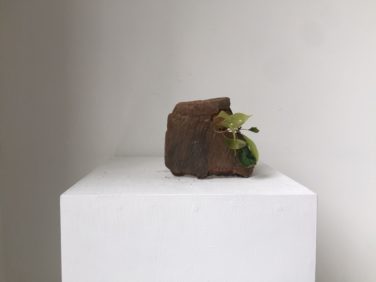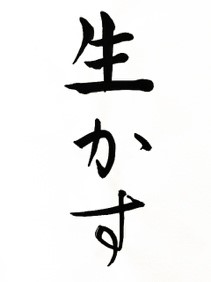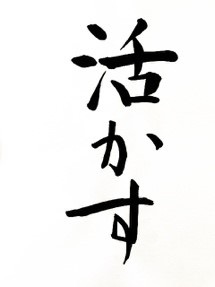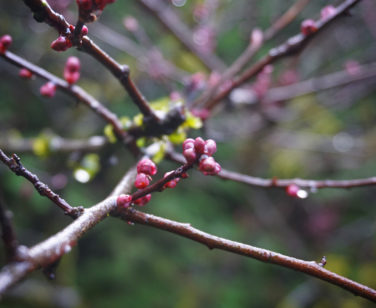MUSINGS BY DIANE DURSTON, CURATOR EMERITA
Walking the empty streets of Tokyo last week in search of a bit of nature to refresh his spirit, calligrapher Kihachiro Nishiura noticed a camphor tree with a small plaque beneath it that identified it as having grown from the seed of a tree that stood in Nagasaki on the day of the atomic bombing. Although the city was obliterated, a few of the hardiest trees survived.

Nishiura decided to bring home a branch of the tree to make an ikebana, placing it in the broken shards of an old earthenware vessel. With this, he gave voice to the way life always prevails. Peace returned to Nagasaki, and the camphor tree lives on.
“Life is a cycle,” he says. “Coronavirus difficulties must one day be gone and peace must come again.”
In the world of ikebana, one of the goals is to understand the natural energy of the plant and bring awareness of its life to the viewer’s attention. Ikasu is the word used to express this.

Ikasu is an interesting word in Japanese. It can be written with two different kanji characters, one (生かす) means to revive, to bring to life; the other (活かす) means to make the best of something.
Both characters can be used in combination with the kanji for flower (花) to write the word ikebana (生花 or 活花), or flower arrangement. Japanese is a complicated language, yes, but fascinating in that one written word can have subtly different nuances depending on the kanji used to write it. Ikebana can literally mean either to bring flowers to life or to make the best use of them. Do the flowers not die as a result of being cut from the plant? Yes, but perhaps we can make the best of them by bringing the beauty of their life force to our attention.

According to Kimiko Gunji, a teacher of the Ikenobo School of Ikebana, practitioners of this traditional art form use each cut flower or branch to its best advantage, giving it new life. Students of ikebana are encouraged to learn how each plant is found in nature and understand its growth habits. Especially in the tearoom, rather than gathering flowers in big colorful displays, arrange them one by one as if they were found beside a path in the woods, at the edge of a pond, in a corner of the garden.
The gift of the artist is to learn how best to understand and express the emerging energy of a flower picked as a bud, just ready to bloom. The fact that it won’t last more than a day or two is a part of the experience of the ephemeral nature of all life.
“Life and reality are only what we each perceive them to be. Life doesn’t happen to us. We make it happen.”
In a recent message, Gunji Sensei, used the word “ikasu” (活かす) to explain how she feels about this moment of imposed solitude we are experiencing today. She feels that we should use this time to the fullest advantage. Find the potential benefits of time spent alone, time spent with family, time not to be wasted. She says, “Life and reality are only what we each perceive them to be. Life doesn’t happen to us. We make it happen. Reality isn’t separate from us. We create our own reality every moment of the day.”

Diane is the author of Wabi Sabi: The Art of Everyday Life, a collection of quiet meditations on life lived simply and with intention, and three books on Kyoto (all available online).
Copyright: © 2020